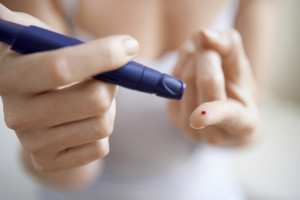A Step Closer to Treating Diabetes with Stem Cell Therapy
 While there are a quite a few differences between type 1 diabetes and type 2 diabetes , there is one thing that these patients do share: an inadequate level of insulin. For a while now, medical researchers have been focused on developing a way to restore the pancreas’ ability to produce an adequate level of insulin once again. For type 1 diabetes, this would also include the regeneration of new beta cells in the patient’s pancreas.
While there are a quite a few differences between type 1 diabetes and type 2 diabetes , there is one thing that these patients do share: an inadequate level of insulin. For a while now, medical researchers have been focused on developing a way to restore the pancreas’ ability to produce an adequate level of insulin once again. For type 1 diabetes, this would also include the regeneration of new beta cells in the patient’s pancreas.
Frankly, scientists and medical researchers have been testing a number of innovative treatments for diabetes in recent diabetes clinical trials. Currently, there are two separate methods that scientists can use to generate new endocrine cells (this describes a whole category of cells which are responsible for secreting certain hormones) from human embryonic stem cells (hESCs). They could choose to generate these cells in vitro in culture, or they may need to transplant the immature cell precursors into mice.
Developing Better Stem Cell Therapies for Diabetes
On the other hand, a research team from the University of California’s San Diego School of Medicine is working with members of the San Diego biotech company, ViaCyte, Inc. on a very ambitious project. They have been analyzing the similarities and differences between these two variations of hESC-derived endocrine cell populations and primary human endocrine cells. They hope that their extensive analysis will help them to develop even better stem cell therapies for people with diabetes.
This team of scientists had a lot to examine during this project before they could even start to develop any new therapies. They compared gene expressions and the chromatin architecture (this is the structure of combined proteins and DNA that form the nucleus of the cell). This was a crucial step, as dynamic remodeling can occur at varying stages of differentiation for both hESC-derived cells and primary human endocrine cells.
Transplanted Cells vs. In Vitro Cells
According to the principal investigator for this clinical study, Maike Sander, MD, they had discovered that the endocrine cells being obtained from the transplanted mice were remarkably similar to the primary human endocrine cells. Aside from being a professor of pediatrics, cellular, and molecular medicine, Dr. Sander is also the acting director of UC San Diego’s Pediatric Diabetes Research Center (one of the leading research facilities in California). She believes that these results show that hESCs can be arranged into endocrine cells that are all but indistinguishable from their primary human counterparts.
On the other hand, the research team did notice that the endocrine cells produced in vitro were lacking many attributes that the primary endocrine cells possessed. They also did not express many of the genes which are essential for many endocrine cell functions. Given what they have seen, these particular cells were unable to reverse diabetes in any of the diabetic animal models.
Sander’s team believe that one way they could continue to advance the use of cell replacement therapies is by transplanting the endocrine precursor cells into diabetics. This way, the cells will have a chance to mature within the patient, just like they do within the lab mice. Of course, diabetes clinical trials have been unable to test whether the maturation cycle will actually proceed in the same way within human beings as they do in the mouse models.
An Alternative Approach for Stem Cells
An alternative approach to transplanting these stem cells would involve generating a group of fully functional endocrine cells in the culture dish and then transplanting these cells into the diabetic patient. Unfortunately, as of now, there is still no effective way to generate a functioning group of endocrine cells within a culture disk, but this clinical study has pointed out some potential targets for the steps that are currently M.I.A. in the in vitro differentiation protocols.
Sander and her colleagues have also identified a key mechanism for the induction of developmental regulators (i.e. the removal of a whole set of proteins that are capable of remodeling chromatin, the Polycomb group or PcG). Reinstating PcG-dependent repression extinguished the expression of certain genes which are normally only activated temporarily. These genes need to be turned off to allow the cells to progress to their final state of endocrine differentiation. For the cells that were produced in the culture dish, the team discovered that PcG-mediated repression was not completely eliminated, which was most likely the cause for the malfunction in the cells.
With this valuable new insight, Sanders and her team of researchers plan to produce new protocols that could generate functional insulin-producing beta cells in vitro. This would be a crucial step not only for future diabetes treatments and therapies, but also for pinpointing the exact mechanisms of this disease which could help them better understand the pathogenesis of diabetes.